In October 1604, a new star appeared in the sky, puzzling astronomers of the day. First observed on Oct. 9, German astronomer Johannes Kepler (1571-1630) began his observations on Oct. 17 and tracked the new star for over a year. During that time, it brightened to magnitude -2.5, outshining Jupiter, and for several weeks remained visible in the daytime. Publication of his detailed observations in 1606 led astronomers to call the star Kepler’s Supernova, today formally designated as supernova SN 1604. Astronomers of the day did not know what caused the star’s sudden appearance and eventual disappearance, but the phenomenon helped shape European cosmology toward the heliocentric model proposed by Polish astronomer Nicolaus Copernicus half a century earlier. Today, astronomers designate SN 1604 as a Type Ia supernova, resulting from the explosion of a white dwarf star, and use ground-based and space-based telescopes to study its remnants.
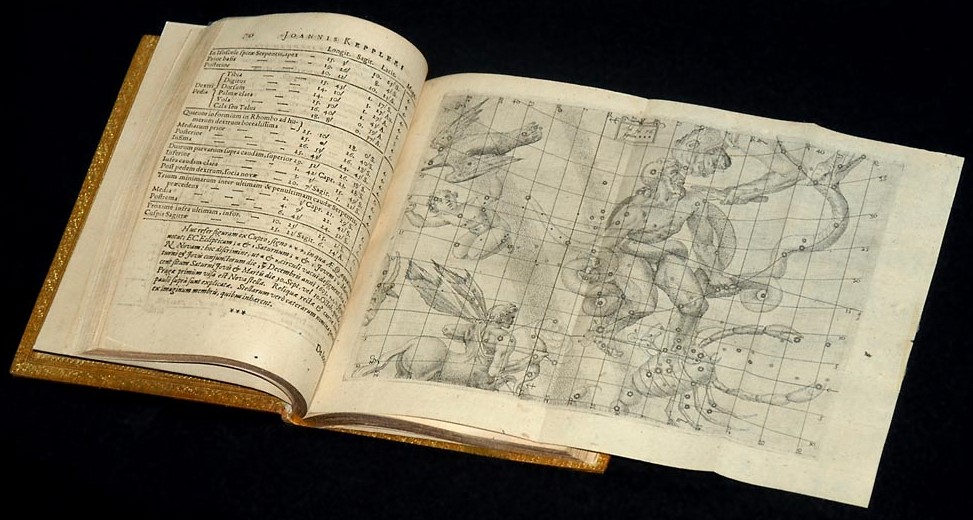

Left: Portrait of Johannes Kepler by August Köhler. Middle: Kepler’s book about his observations of the 1604 supernova open to the page depicting the location of the new star. Right: Closeup of Kepler’s illustration of the location of the new star, designated N, in the constellation Ophiuchus near the right foot of the serpent-bearer.
Italian astronomer Lodovico delle Colombo first observed the supernova in the constellation Ophiuchus on Oct. 9. Kepler, then working in Prague, heard rumors of the new star but did not observe it until Oct. 17. He continued to monitor the star for over a year, inspired by the earlier work of Danish astronomer Tycho Brahe’s observations of a similar phenomenon, the 1572 supernova. The new star quickly brightened to magnitude -2.5, outshining Jupiter, and for three weeks could be seen in the daytime before finally fading into obscurity in March 1606. Kepler could only make naked eye observations, since Italian astronomer Galileo Galilei didn’t turn his newly invented telescope to the skies for another four years after SN 1604 faded from view.
Later in 1606, Kepler summarized his observations in his book De Stella nova in pede Serpentarii (On the New Star in Ophiuchus’ Foot), published in Prague. SN 1604 is believed to be about 20,000 light years away, near the edge of a dark nebula complex. Kepler and his contemporaries observed not only the last known supernova to occur in the Milky Way Galaxy but also the last supernova visible to the naked eye until 1987. That one, Supernova 1987A, appeared in the Large Magellanic Cloud, a small satellite galaxy of the Milky Way.
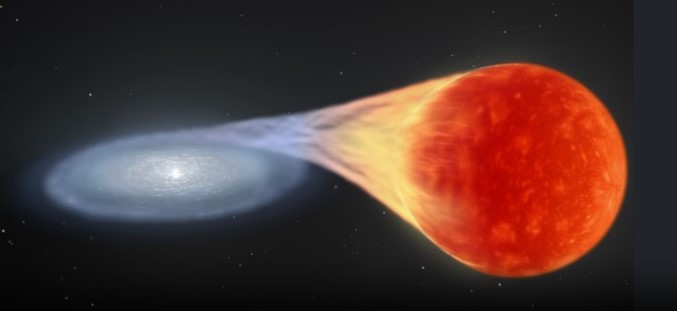
A Type Ia supernova results from a white dwarf drawing in material from a nearby red giant star, the additional mass leading to a runaway thermonuclear explosion.
Astronomers today understand that what Kepler and others believed as the birth of a new star actually represented the violent death of a star. Astronomers today classify supernovas according to their characteristics, and SN 1604 belongs to the group known as Type Ia supernovas, typically found in binary star systems composed of a white dwarf and a red giant. The gravitation force of the white dwarf draws in material from its larger less dense companion until it reaches a critical mass, around 1.4 times the mass of our Sun. At that point, a runaway thermonuclear chain reaction begins, causing a release of tremendous amounts of energy, including light, that we see as a sudden brightening of an otherwise dim star.
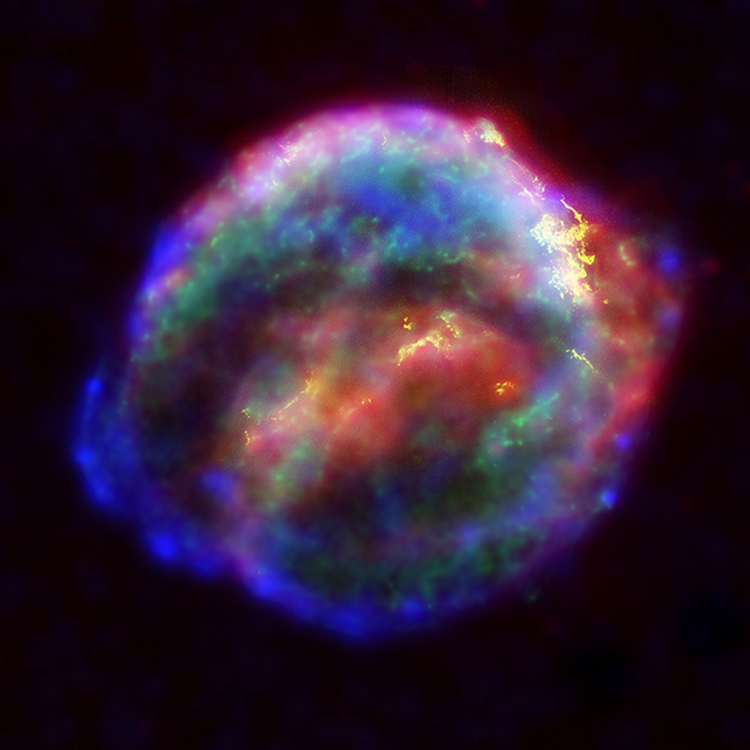
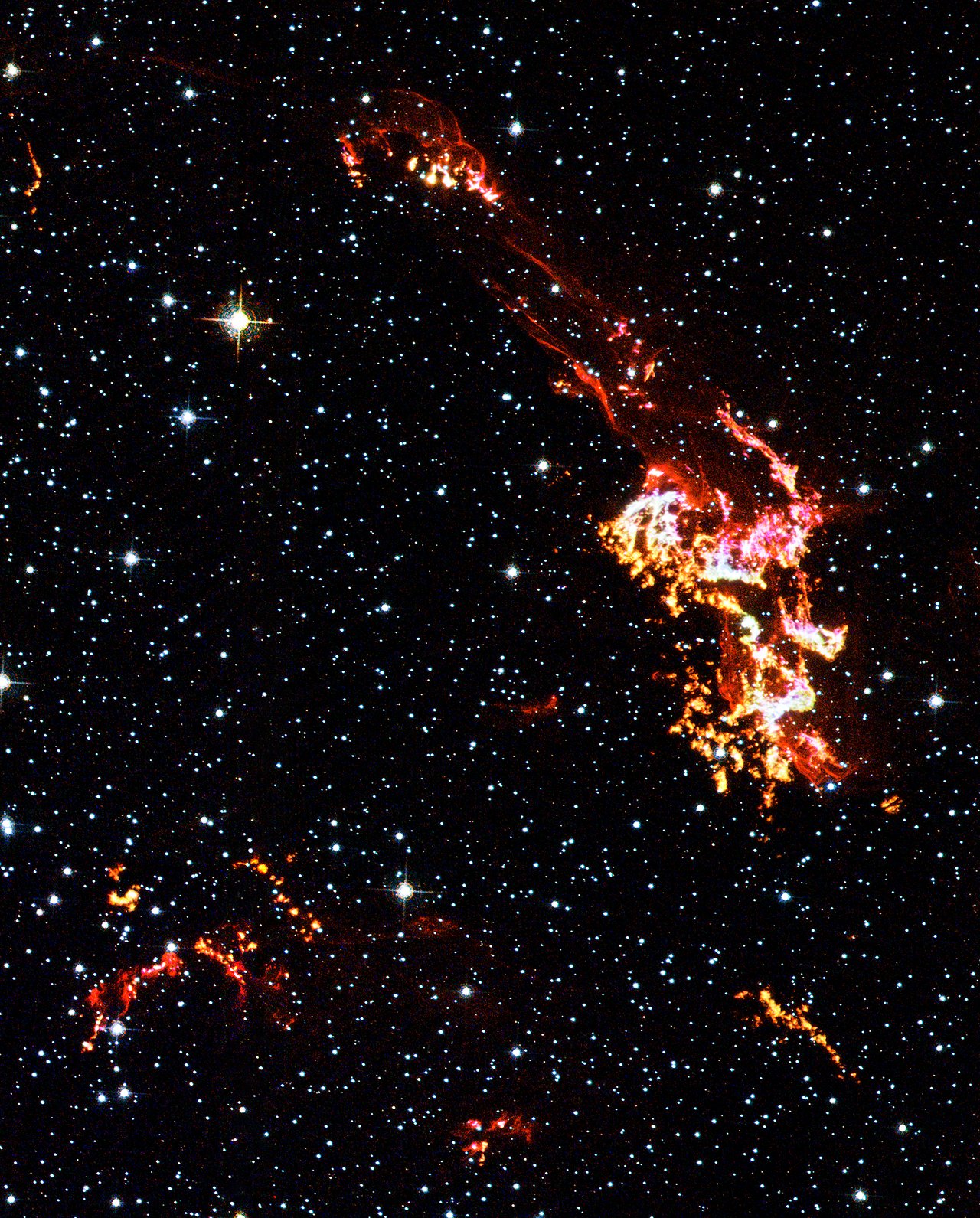
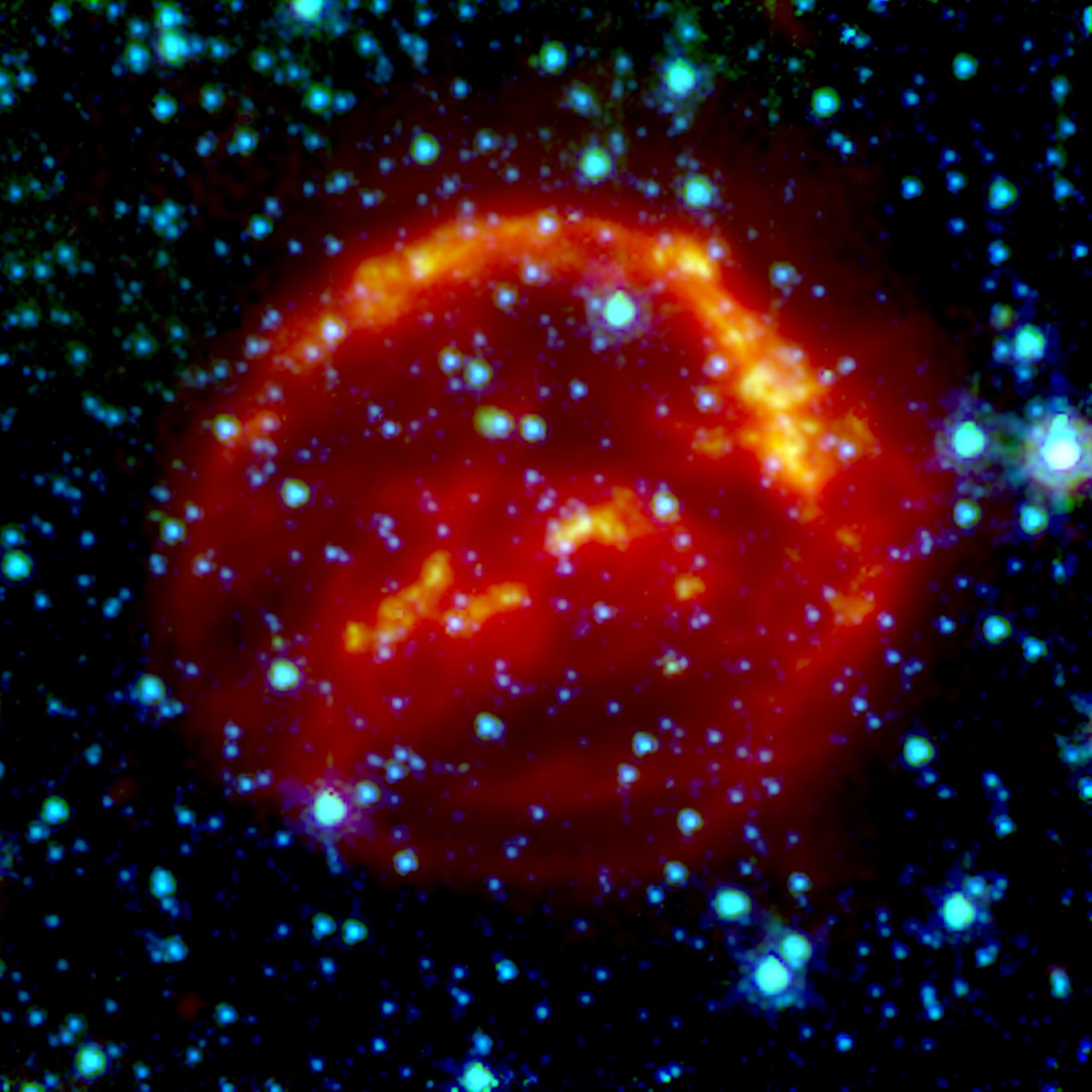
Images of Kepler’s supernova remnants in different portions of the electromagnetic spectrum. Left: X-ray image from the Chandra X-ray Observatory. Middle: Visible image from the Hubble Space Telescope. Right: Infrared image from the Spitzer Space Telescope.
Supernova explosions leave remnants behind and those of SN 1604 remain visible today. Ground-based and space-based instruments using different parts of the electromagnetic spectrum study these remnants to gain a better understanding of their origins. The remnants of SN 1604 emit energy most strongly in the radio and X-ray parts of the electromagnetic spectrum. In recent years, astronomers have used Type Ia supernovas to determine the rate of expansion of the universe. Because Type Ia supernovas all occur in stars of about 1.4 solar masses, they give out about the same amount of light. This makes them useful as distance indicators – if one Type Ia supernova is dimmer than another one, it is further away by an amount that astronomers can calculate. Based on this information, astronomers believe that the expansion of the universe is accelerating, possibly caused by the presence of a mysterious substance called dark energy.
Events in world history in 1604:
January 1 – First performance of William Shakespeare’s play A Midsummer’s Night’s Dream.
March 22 – Karl IX begins his rule as King of Sweden.
August 5 – Sokolluzade Mehmed Pasha becomes the new Ottoman Grand Vizier in Constantinople.
August 18 – England and Spain sign the Treaty of London, ending their 20-year war.
September 1 – Sri Guru Granth Sahib, Sikhism’s religious text, is installed at Hamandir Sahib in Amritsar, India.
October 4 – Emperor of Ethiopia Za Dengel is killed in battle with the forces of Za Sellase, who restores his cousin Yaqob to the throne.
November 1 – First performance of William Shakespeare’s tragedy Othello.
December 29 – A magnitude 8.1 earthquake shakes the Taiwan Strait causing significant damage.